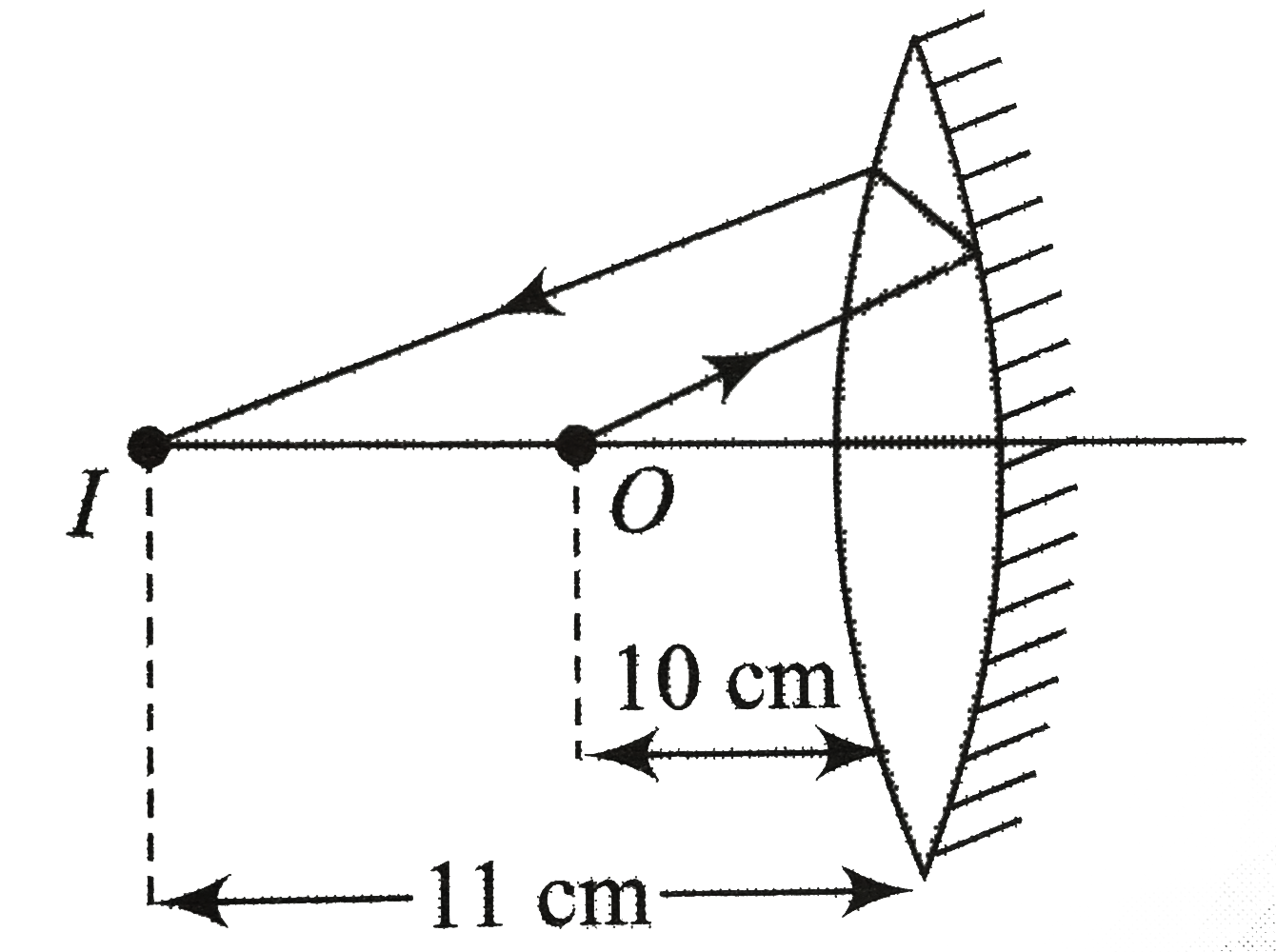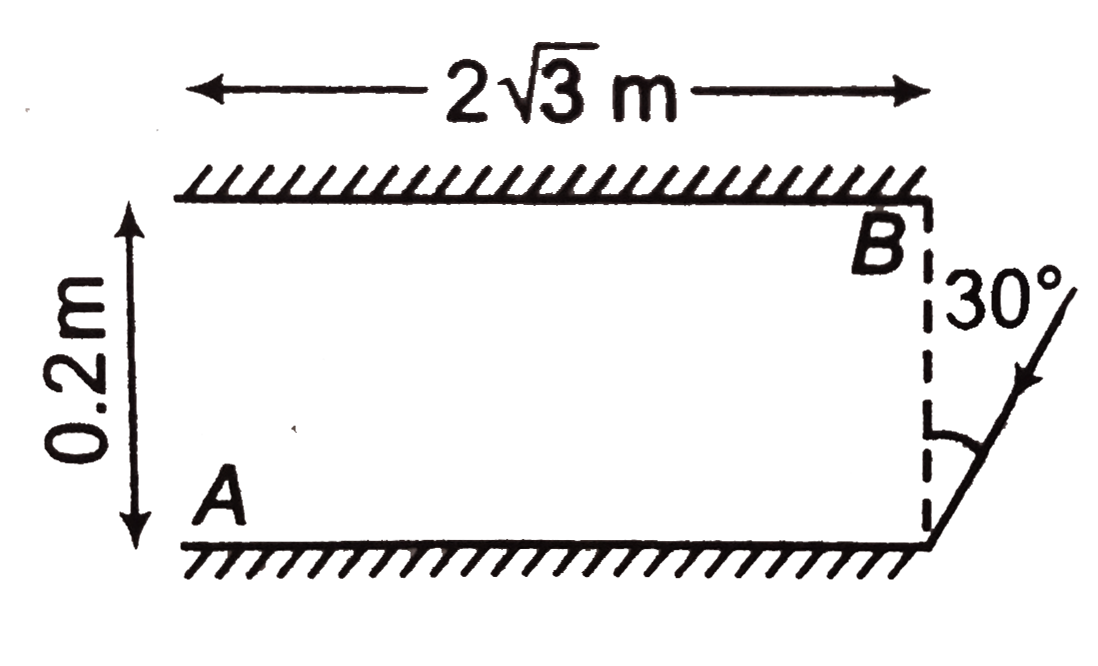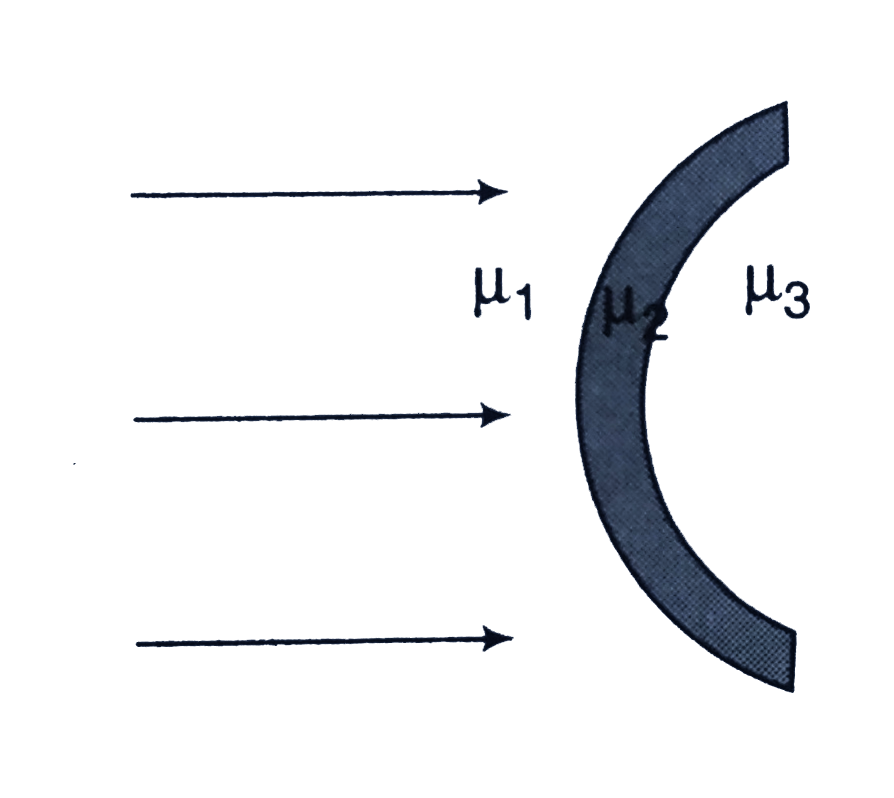EXAMPLE from AAKASH SERIES Chapter 31 RAY OPTICS for Class 12
| Class 12 | PHYSICS |
| Chapter | RAY OPTICS |
| AAKASH SERIES | EXAMPLE |
| Medium | English |
| Academic Year | 2023-2024 |
Question 2
A point source of light S, placed at a
distance L in front of the centre of a mirror of width d,
hangs vertically on a wall. A man walks in front of the
mirror along a line parallel to th mirror at a distane
2L form it as shown.The greatest distance over which
he can see the image of the light source in the mirror is
(a) d/2 (b) d (c) 2d (d) 3 d.
 View Solution
View SolutionQuestion 7
An object is placed in front of a convex mirror at a distance of 50cm. A plane mirror is introduced covering the lower half of the convex mirror. If the distance between the object and the plane mirror is 30cm, it is found that there is no parallax between the images formed by the two mirrors. What is the radius of curvature of the convex mirror? View SolutionQuestion 8
A concave mirror of focal length 10cm and a convex mirror of focal length 15cm are placed facing each other 40cm apart. A point object is placed between the mirrors, on their common axis and 15cm from the concave mirror. Find the position and nature of the image produced by successive reflections, first at the concave mirror and then at the convex mirror. View SolutionQuestion 10
Light of wavelength 4500 Å in air is incident on a plane boundary between air and another medium at an angle 30° with the plane of boundary. As it enters from air into the other medium, it deviates by 15∘ towards the normal. Find refractive index of the medium and also the wavelength of given light in the medium. View SolutionQuestion 11
A fish rising vertically to the surface of water in a lake uniformly at the rate of3m/s observes a king fisher bird diving vertically towards water at the rate 9 m/s vertically above it. If the refractive index of water is 4/3, find the actual velocity of the dive of the bird in cm/sec. View Solution
View SolutionQuestion 13
An observer can see through a pin-hole the top end of a thin<br> rod of height h,placed as shown in the figure. The beaker height is 3h and its radius h. When the beaker is filled with a liquid up to a height 2h, he can see the lower end of the rod. Then, the refractive index of the liquid is

(a) 52 , (b) √52 , (c) √32 , (d) 32View SolutionQuestion 15
An air bubble is trapped inside a glass cube of edge 30 cm. Looking through the face ABEH, the bubble appears to be at normal distance 12 cm from this face and when seen from the opposite face CDGF, it appears to be at normal distance 8 cm from CDGF. Find refractive index of glass and also the actual position of the bubble.
 View Solution
View SolutionQuestion 16
The XY plane is the boundary between two tranparednt media. Medium 1 with z≥0 has a refraxtive index of √2 and medium 2 with z≤0 has a refractive index of √3. A ray of light in medium 1 given by the vector 6√3ˆi+8√3ˆj−10ˆk is incident on teh plane of separation. Find the unit vector in the direction of teh refracted ray in medium 2. View SolutionQuestion 17
A ray of light travelling in a rarer medium strikes a plane boundary between the rarer medium and a denser medium at an angle of incidence 'i' such that the reflected and the refracted rays are mutually perpendicular. Another ray of light of same frequency is incident on the same boundary from the side of denser medium. Find the minimum angle of incidence at the denser-rarer boundary so that the second ray is totally reflectedView SolutionQuestion 20
Due to a vertical temperature gradient in the atmosphere, the index of refraction varies. Suppose index of refraction varies as n=n0√1+ay, where n0 is the index of refraction at the surface and a=2.0×10−6m−1 . A person of height h=2.0m stands on a level surface. Beyond what distance will he not see the runway?
 View Solution
View SolutionQuestion 21
A ray of light is incident on a glass slab at grazing incidence. The refractive index of the material of the slab is given by μ=√(1+y) . If the thickness of the slab is d=2m, determing the equation of the trajectory of the ray inside the slab and the coordinates of the point where the ray exits from the slab. Take the origin to be at the point of entry of the ray. View SolutionQuestion 23
One end of a cylindrical glass rod (μ=1.5) is given the shape of a concave refracting surface of radius 10cm. An air bubble is situated in the glass rod at a point on its axis such that it appears to be at distance 10 cm from the surface and inside glass when seen from the other medium. Find the actual location of air bubble.View SolutionQuestion 24
A solid glass sphere with radius R and an index of refraction 1.5 is silvered over one hemisphere. A small object is located on the axis of the sphere at a distance 2R to the left of the vertex of the unsilvered hemisphere. Find the position of final image after all refractions and reflection have taken place. View SolutionQuestion 28
A source of light is located at double focal length from a convergent lens. The focal length of the lens is f=30cm. At what distance from the lens should a flat mirror be placed, so that the rays reflected from the mirror are parallel after passing through the lens for the second time? View SolutionQuestion 32
A point object O is placed at a distance of 30 cm from a convex lens of focal length 20 cm cut into two halves each of which is displaced by 0.05 cm as shown in figure. Find the position of the image. If more than one image is formed, find their number and distance between them.
 View Solution
View SolutionQuestion 33
An object is 5.0m to the left of a flat screen. A converging lens for which the focal length is f=0.8m is placed between object and screen.
(a) Show that two lens positions exist that form images on the screen and deremine how far these positions are from the object?
(b) How do the two images differ from each other? View SolutionQuestion 34
An object is 5.0m to the left of a flat screen. A converging lens for which the focal length is f=0.8m is placed between object and screen.
(a) Show that two lens positions exist that form images on the screen and deremine how far these positions are from the object?
(b) How do the two images differ from each other? View SolutionQuestion 36
Two thin converging lenses are placed on a common axis, so that the centre of one of them coincides with the focus of the other. An object is placed at a distance twice the focal length from the left hand lens. Where will its image be? What is the lateral magnification? The focal of each lens is f.View SolutionQuestion 38
A point object is placed at a distance of 12cm from a convex lens of focal length 10cm. On the other side of the lens, a convex mirror is placed at a distance of 10cm from the lens such that the image formed by the combination coincides with the object itself. The focal length of the convex mirror is View SolutionQuestion 40
A pin is placed 10cm in front of a convex lens of focal length 20cm, made of a material having refractive index 1.5 . The surface of lens farther away from the pin is silvered and has a radius of curvature 22cm. Determine the position of the final image. Is the image real or virtual?
 View Solution
View SolutionQuestion 41
A biconvex thin lens is prepared from glass of refractive index 3/2. The two bounding surfaces have equal radii of 25cm each. One of the surfaces is silvered from outside to make it reflecting. Where should an object be placed before this lens so that the image coincides with the object. View SolutionQuestion 47
Light is incident normally on face AB of a prism as shown in Figure. A liquid of refractive index μ is placed on face AC of the prism. The prism is made of glass of refractive indes 3/2 . Find the limits of μ for which total internal reflection takes place on the face AC.
(A)μ>√32 (B)3√34>μ (C)μ>√3 (D)μ<√32 View Solution
View SolutionQuestion 51
Calculate (a) the refracting angle of a flint glass prism which should be combined with a crown glass prism of refracting angle 6° so that the combination may have no deviation for D line and (b) the angular separation between the C and F lines, given that the refractive indices of the materials are as follows:
 View Solution
View Solution





